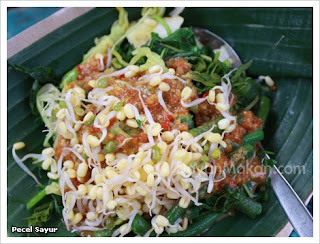Ways of making
Batik originally made on material with white color made of cotton cloth called. Today batik is also made on other materials such as silk, polyester, rayon and other synthetic materials. Batik pattern is formed with a liquid wax using a tool called a canting for subtle motifs, or large-sized brush for a motive, so that the liquid wax to seep into the fabric fibers. Fabrics that have been painted with wax and then dyed with the desired color, usually starting from the colors of young. Immersion then taken to another motif with older or dark colors. After some time the coloring process, which has dibatik cloth dipped in chemicals to dissolve the wax.
1. Batik Tiga Negeri (Batik Three State)

Batik Tiga Negeri (Batik Three State) known for its color which consists of three parts. There are blue, brown / Sogan, and red. Batik is sometimes known as Blue-Bang-Bang-ment or for a more modest color variations. Some say that batik making is done in three different places. Blue in Pekalongan, Red in Lasem, and Sogan in Solo. Until now the complexity of detail Batik Tiga Negeri is difficult once reproduced.
2. Batik Jawa Hokokai (Javanese Batik Hokokai)

Batik Jawa Hokokai (Javanese Batik Hokokai). Created with writing techniques in Java during the Japanese occupation (1942-1945). He is a long cloth that cut is in the morning / afternoon (two styles in a single fabric) as a solution to shortage of raw material of cotton cloth in those days. Another feature that is easily recognizable is the motive. Motif of butterflies, flowers, chrysanthemum, and details that accumulate to make Java Batik Hokokai position noble art.
3. Batik Lasem (Lasem Batik)

Lasem Batik is known for his distinctive red color. In Lasem (East Java) itself, batik craftsmen has been significantly reduced. Some collectors call Batik batik Lasem is the prettiest among others. Batik is also a marker of blending two cultures, Java and China.




